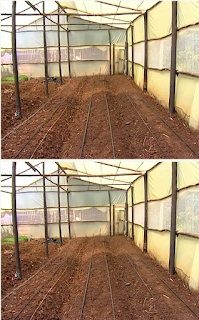Green House Farming in Nigeria
It is farming under a confined controlled environment as against the traditional open field farming. The structure can be made of glass or polyethene covers depending on availability and cost of materials. This structure ranges in size. lt is not a new technology as it started way back in the 13th Century in Italy before it spread.
Various crops are grown in a greenhouse including cucumber, flowers, tomatoes, capsicum, strawberry etc Generally crops grown in a greenhouse should be of high value returns comparatively to its high cost of construction.
With greenhouse farming, a farmer can get more yield per unit area of land, easier control of pests and diseases, prolonged production period, efficient water utilisation, low cost of labour (that is spraying, weeding and watering) High quality of crop produce. timely crop production, less exposure to chemical toxin.
There are also challenges of greenhouse farming as the high initial cost of investments to set up one and high level of greenhouse management skill is required.
Truth is that greenhouse farming is usually seen as the exclusive of big time farmers because of the high cost of construction but there are low-cost greenhouse which is constructed with locally available materials and this can last up to 10 years.
For a low-cost greenhouse measuring 24ft by 45ft, l believe N180,000 can cover the cost of construction especially if you are in the rural area as one can utilize the wood from the trees around, get nails, condemned engine oil (will prevent the wooden materials from insect infestation), black tarpaulin (would be wrapped at the base of standing post), insect netting (to enable circulation and prevent insects from entering the greenhouse). poly cover (200 micro greenhouse cover)
It involves 2 stages, the first involves setting up the structure which involves setting up of the frame and the second is covering with insect netting and greenhouse cover,
Here are pictures to give you an idea of what the process looks like.
NOTE: One must personally be on the field to learn how to construct it and if you acquire this skill you can easily plant even STRAWBERRY without soil inside the greenhouse by way of Aquaponics as the Reverend Sisters l work with have greenhouses they built by themselves each measuring 24ft by 90ft and in each they have fish ponds which has about 10,000 catfish and the waste wate from the fish pond is what feeds the strawberry to grow without soil, growing on PVC pipes and they harvest about 1000kg of strawberry every month from each greenhouse.
Post credit: Pavore9

























No comments:
Dear Great mind,
Your feedback is very important. We need it to serve you better